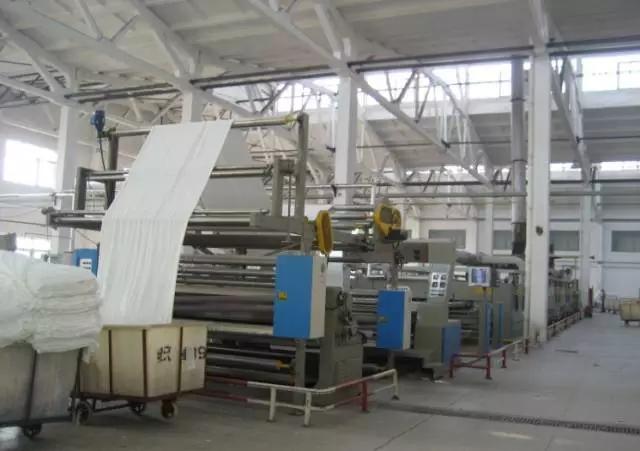
一、Whitening
Using the principle of complementary color of light to increase the whiteness of textile crystal process is called whitening finishing, also known as whitening.Bleached textiles still contain a yellowish substance, and enhanced bleaching can damage the fibers.The use of whitening agent can make the blue and yellow complement each other and improve the whiteness of the textile when the fiber is not damaged.Whitening methods have blue and fluorescent two.The former applies a very light blue dye or pigment to the bleached fabric to counteract the yellow, which reduces the brightness of the fabric and makes it slightly dull due to the increased absorption of light.Fluorescent whitening agent is close to the five color organic compounds, dyed on the fabric, by ultraviolet light excitation and produce blue, purple fluorescence, and the reflected yellow light complement, increase the whiteness and brightness of the fabric, the effect is better than the blue.Fluorescent whitening can also be combined with bleaching, sizing, or wrinkle - resistant finishing in the same bath
二、 softener
In the process of dyeing and finishing, textiles are often deformed by wet heat treatment with various chemical auxiliaries and subjected to mechanical tension, and can cause stiffness and rough hand feeling. Soft finishing is a processing process that compensates for this defect and makes the fabric soft to the touch. There are two methods of soft finishing, mechanical and chemical. The mechanical method uses techniques such as pounding cloth to loosen the yarns or fibers to obtain a softening effect. The chemical method uses a softening agent to reduce the coefficient of friction between fibers to obtain a softening effect. Different softeners adapt to different fibers and produce different softening effects and influence on other properties. Chemical methods are more commonly used, sometimes supplemented by mechanical methods
三、Weight finishing
Weighting finishing is the process of adding weight to silk fabrics by chemical means.In Europe in the 18th century, in order to make up for the weight loss of silk after scouring, the weighted finishing method was used to maintain commercial profits and use value.There are mainly tin weighting method and tannin weighting method.After the tin weighted finishing method of silk fabric proportion increases, feel thick, smooth, gloss rich, draping increased, moisture absorption after the shrinkage reduction B treatment can increase the weight of 20%, repeated treatment, the weight increase can reach 100%.However, the strength, elongation and wear fastness of the silk fabrics after weight gain and finishing are decreased, and it is not good for storage, and it is more brittle after sun exposure.If the tin salt on the surface is removed by soap or synthetic detergent after finishing, the embrittlement can be reduced.Tannin weighting method is not suitable for finishing white and light-colored silk fabrics because the tannin turns black when it meets iron salt




